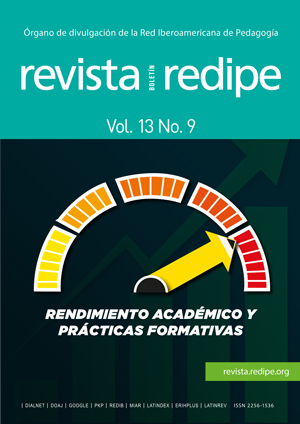Rural woman from Chínipas: generator of added value to the chiltepín chile of her town
Main Article Content
Keywords
Agent of change, Local development, Gender
Abstract
The composition of the homogeneous conglomerate of rural men and women of the present research in the municipality of Chínipas, Chihuahua, Mexico. Have undertaken a journey towards commercialization and the generation of added value in the chiltepin chile, where rural women has transformed into an agent of change and promoter of integration, trust and therefore social capital. The objective was to locate those who marketed chiltepín and which of them and which of them added value to the product. The qualitative ethnographic research was carried out through a descriptive observation study, the techniques used were interview, observation and survey to collect information, with an intentional sampling of 43 family production units dedicated to the collection of chiltepin. The main results identify rural women taking a fundamental role to generate added value, capable of developing and applying improvement strategies in the marketing of chiltepin chile, based on the participation of community members, 22 women and 21 men, where 62% of women added value to the producer, unlike men with 5% favoring the development of the town.
References
Bock, B. B. (2015). Gender mainstreaming and rural development policy; the trivialization of rural gender issues. Gender, Place & Culture, 22(5), pp. 731- 745. Available at: https://doi.org/10.108 0/0966369X.2013.879105
Consejo Nacional de Evaluación de la Política de Desarrollo Social. (2018). Informe de pobreza y evaluación 2018 Chihuahua. Alcaldía Benito Juárez, México. CONEVAL. [En línea]. Disponible en: https://www.coneval. org.mx/coordinacion/entidades/ Paginas/Informes-de-Pobreza-yEvaluacion-2018.aspx
Gaspar-Rivera, J. E. y Meza-palmeros, J. A. (2023). Estrategias empleadas por mujeres indígenas para preservar sus saberes alimentarios en el área metropolitana de Monterrey. Revista de Alimentación Contemporánea y Desarrollo Regional, 34(63), 1-24. http:// doi.org/10.836/es.v34i63.1402
Gauché-Marchetti, X., Domínguez Montoya, A., Fuentesalba- Carrasco, P., SantanaSilva, D., Sánchez-Pezo, G., BarríaParedes, M., Pérez-Díaz, C., GonzálezFuente, R., Sanhueza-Riffo, C. (2022). Juzgar con perspectiva de género. Teoría y normativa de una estrategia ante el desafió de la tutela judicial efectiva para mujeres y personas LGBTIQ. Revista Derechos del Estado, 52: 247-278. https://doi.org/10.18601/01229893. n52.08
Góndora, R., Pérez, M., Milán, M. J., LópezGelats, F. (2020). Strategies and drivers determining the incorporation of you farmers into the livestock sector. Rural Studies, 78, pp. 131-148. http://doi. org/10.1016/j.jrurstud.2020.06.028
Guerrero, J.E., Lara, P., Maroto, F. y Ortíz, L. (2021). El releva generacional y su importancia para el desarrollo de los territorios rurales. Mediterráneo Económico, 35, pp. 219-235. [En línea]. Disponible en: dialnet.unirioja.es/servlet/ articulo?codigo=8402902
Gutiérrez-Diaz, M. C., Reyes-López, J.G., Sapien-Aguirre, A.L. y Piñón-Howlet, L. C. (2023). Municipios vulnerables y los objetivos de desarrollo sostenible: caso Chínipas, Guazapares, Maguarichi y Matachí en Chihuahua, México. Revista de Gestado e secretariado, 14(4), 5999- 6018. http://doi.org/10.7769/gesec. v14i4.2032
Greene, Ricardo, Carla Pinochet Cobos y Debora Lanzeni. 2022. “Futuros imaginados. Perspectivas descentradas en torno al oficio etnográfico”. Antípoda. Revista de Antropología y Arqueología 47: 3-21. https://doi.org/10.7440/ antipoda47.2022.01
Haro-Encinas, J. A., y Martínez-Corina, R. (2020). Patrimonio biocultural y despojo territorial en el Río Mayo. Los guarijíos de Sonora y el proyecto de prese Los Pilares-Bicentenario. Noroeste de México, nueva época, 2, 129-157.
Huamán, F., y Córdova, M. (2018). Desafíos y oportunidades para el emprendimiento femenino. Conferencia: 53° Asamblea Anual de CLADEA 2018, San José, Costa Rica. [En línea]. Disponible en: https://www.researchgate. net/publication/331383663_ Desafios_y_Oportunidades_para_el_ Emprendimiento_Femenino
Instituto Nacional de Estadística y Geografía (2020). Cuéntame de México. México. Junio 2024. [En línea]. Disponible en: https://cuentame. inegi.org.mx/poblacion/rur_urb. aspx#:~:text=%2C%201950%20 %2D%202010.,INEGI,de%20 Poblaci%C3%B3n%20y%20 Vivienda%202020.&text=En%20 1950%2C%20la%20cantidad%20 de,ubica%20en%2021%20por%20 ciento
Instituto Nacional de Estadística y Geografía (2017). Registros administrativos. Estadísticas vitales. Mortalidad. Instituto Nacional de Estadística y Geografía. [En línea]. Disponible en: https://www. inegi.org.mx/rnm/index.php/catalog/407
Mora, G. M., Fernández, M. C., Troncoso, J. (2019). Mujeres rurales y acción productiva para la autonomía. Revista Mexicana de Sociología, 81(4), pp. 797-824. [En línea]. Disponible en: https://www.scielo.org.mx/pdf/rms/ v81n4/2594-0651-rms-81-04-797.pdf



